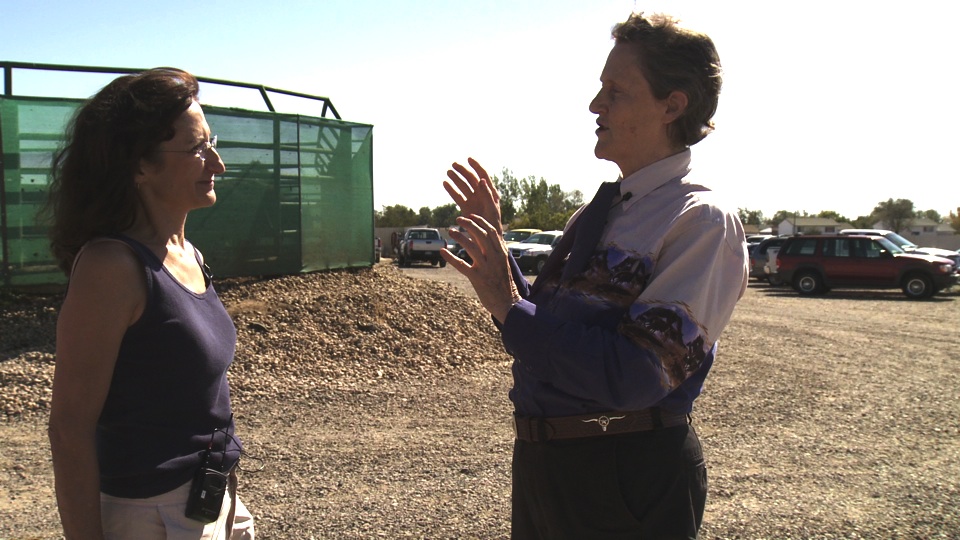On Monday, September 10th, we were honored to have Temple Grandin give us a lesson on the humane slaughter of bison at Double J Meatpacking in Pierce, Colorado. She explained to us that bison almost became extinct, but fortunately now people are raising bison and they’ve really made a comeback. People are especially interested in preserving wild bison. The bison that we saw slaughtered came off the range.

As Dr. Grandin explained, “The only way we can preserve species — we’ve got to make them economically valuable enough so that people are going to want to take care of them.” It was a beautiful fall day as we stood outside of the holding pens and listened to her tell us about these amazing creatures.
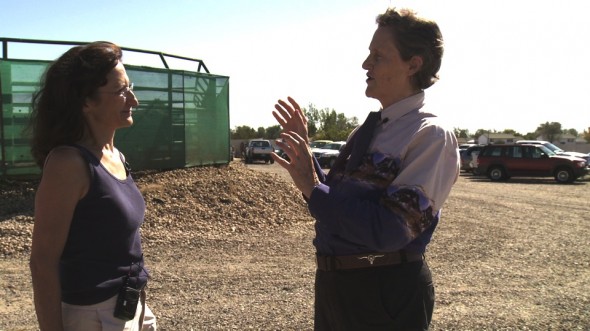
Dr. Grandin went with us each step of the way and told us about all of the precautions that are taken to assure that they are treated and slaughtered humanely.
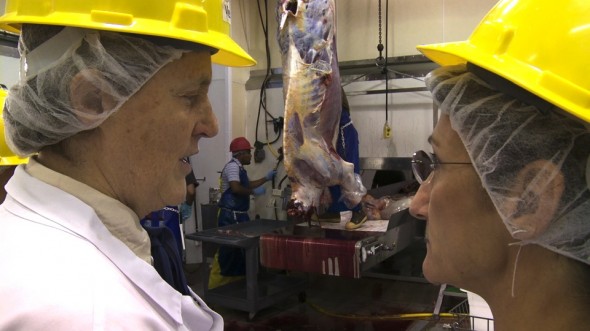
In this particular plant, since bison have a very heavy skull, they stunned the animals using a 357 magnum rifle prior to bleed out. The captive bolt gun, which is used on cattle, would not be effective with bison.

Although it was very dramatic and startling to see the bison being shot at such close range, we knew that they would be insensible to pain instantaneously. It was impressive to see the skill level of the workers at the Double J plant. They were obviously well-trained and serious about humanely transitioning these animals to meat. Even though these scenes are an every day routine for them, they are not desensitized to the animals’ sentience.
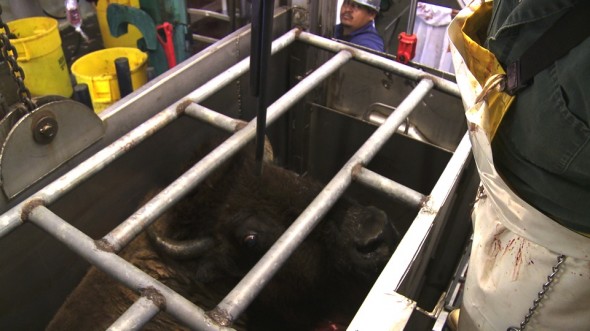
Dr. Grandin took the time to explain the details of how to determine if an animal is being slaughtered humanely. First, she had me feel the eyeball to see that it is unresponsive – an indicator of insensibility. As I moved in to touch this bison’s eye, I could immediately tell that she was unconscious.
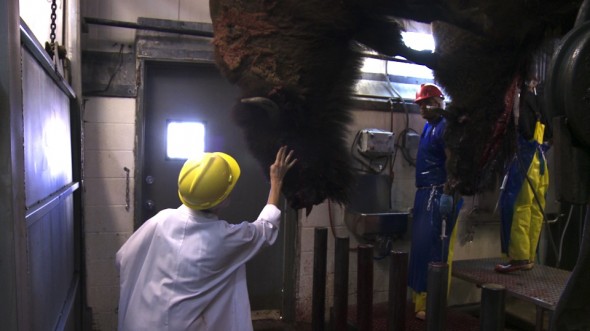
Dr. Grandin also showed us the location of the shot in the skull. It was in the exact place it was supposed to be to assure that the bison lost consciousness immediately.
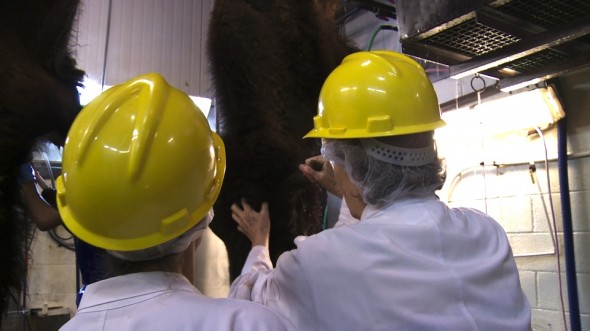
All of these details, although emotionally difficult to consider, are essential for the humane slaughter of animals for meat. I realize that many people would prefer not to get this close to meat processing, but I truly feel that the transparency is important. We owe it to these animals to know how they become our food.
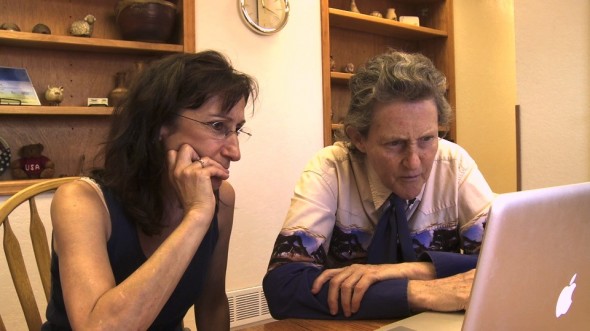
After we were finished watching the process on the kill floor, Dr. Grandin took extra time to go over some footage with us to explain more about the skills involved in humane slaughter.

